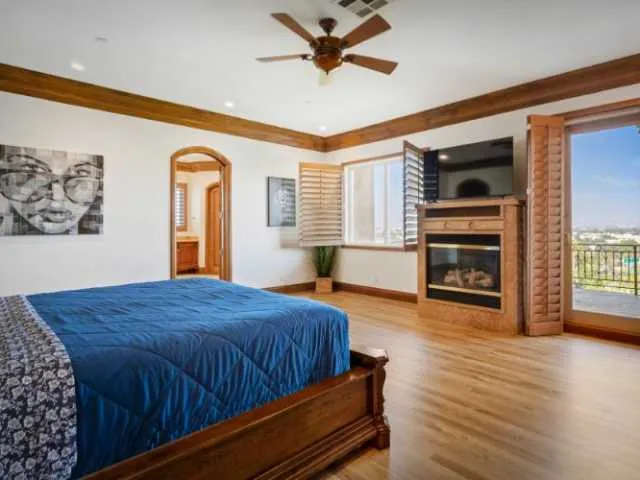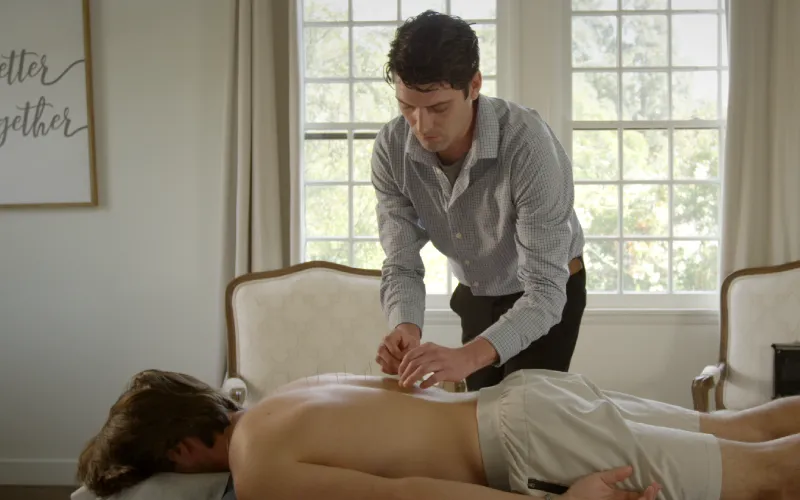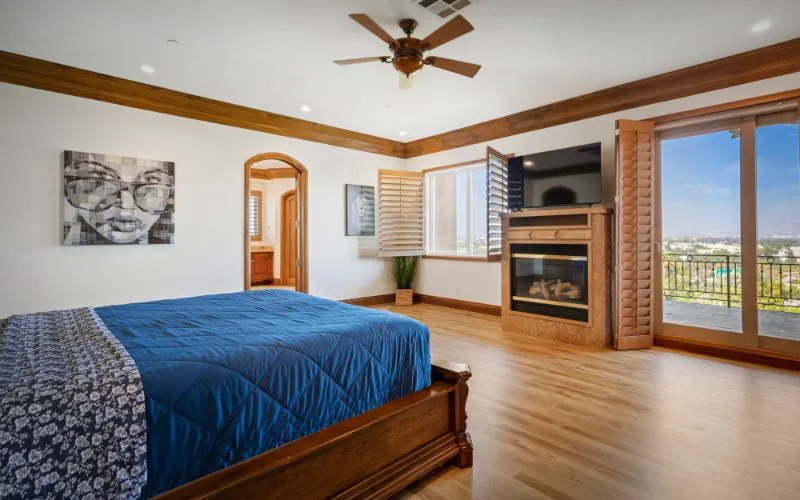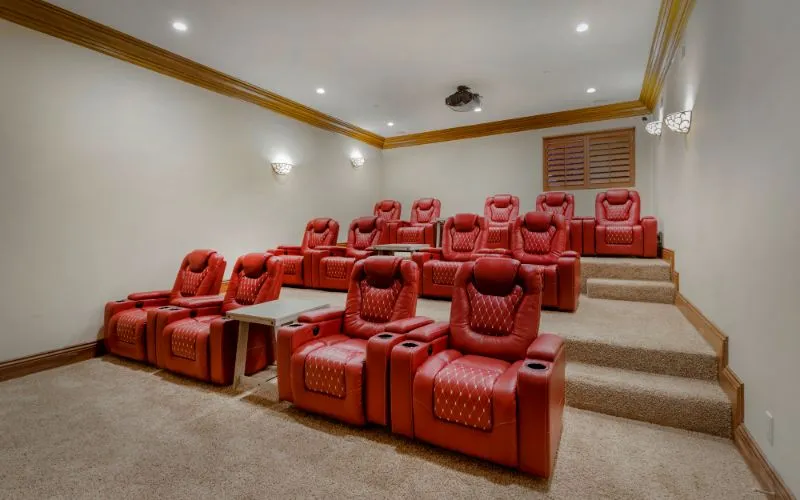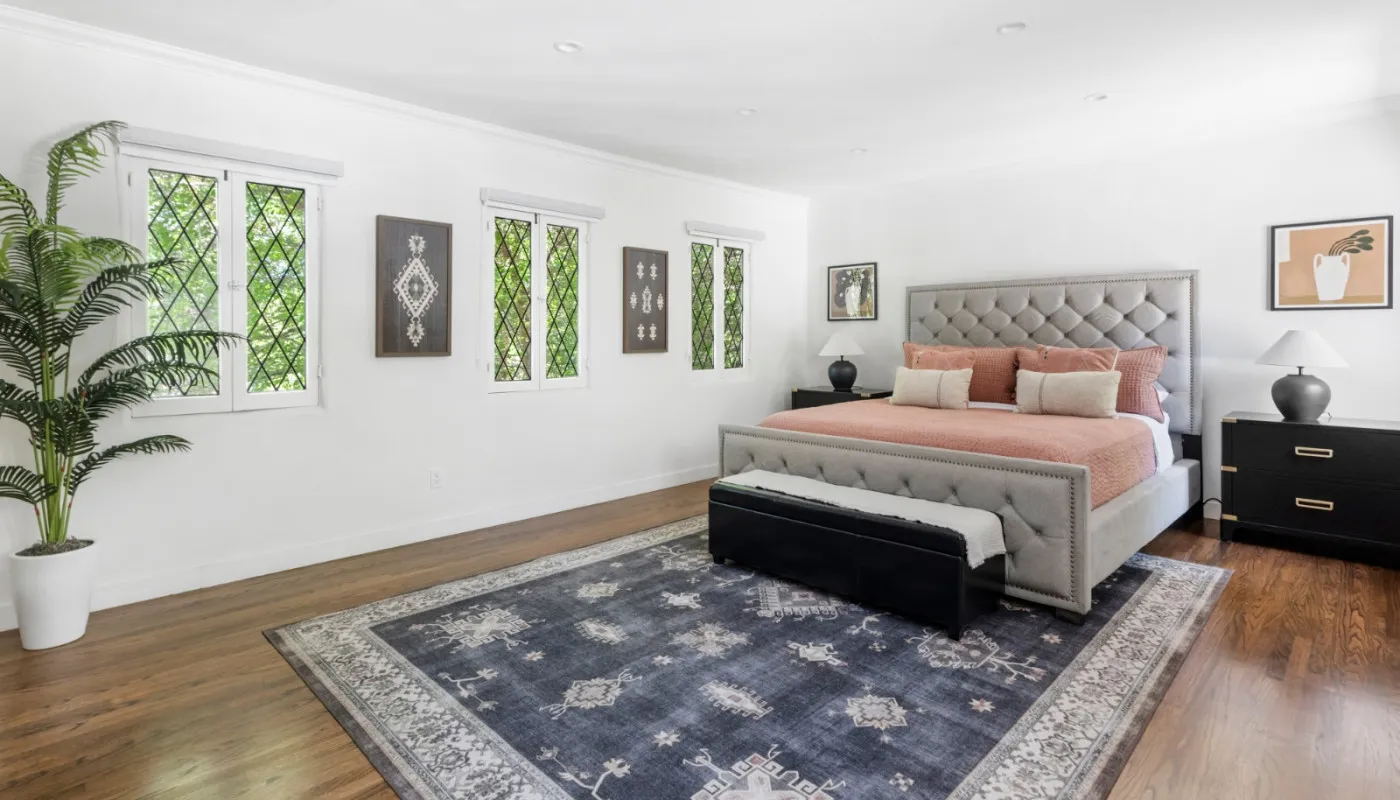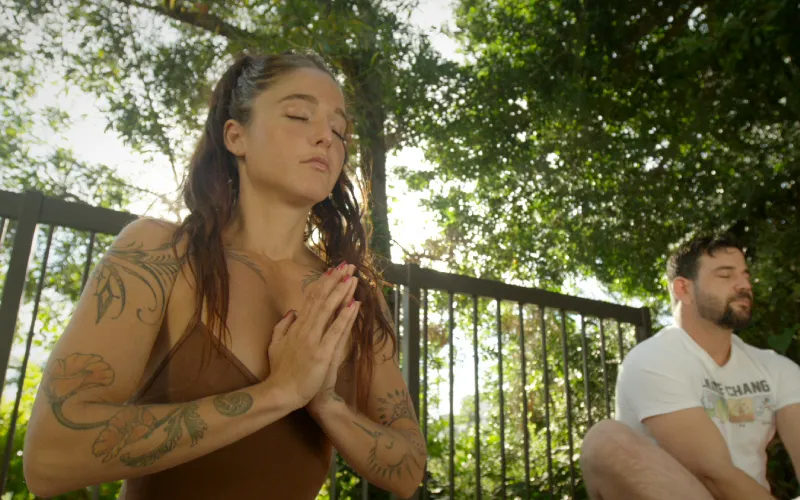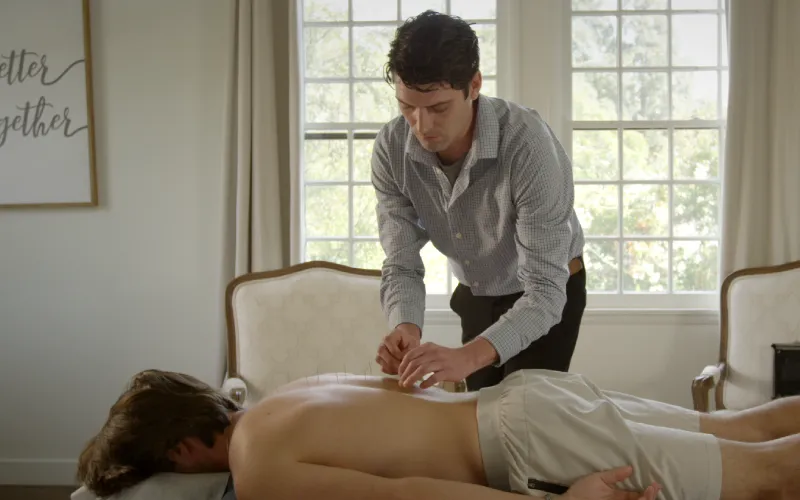
Table of Contents
- Can Buprenorphine Be Used to Treat Xanax Addiction?
- Off-Label Buprenorphine Use in Benzodiazepine Tapering
- What LA Rehab Centers Actually Do for Xanax Withdrawal
- Risks of Mixing Buprenorphine and Benzodiazepines
- Need to Detox?
- Alternative Medications and Therapies for Xanax Recovery
- Insurance Coverage for Buprenorphine-Based Xanax Treatment in LA
- Do Any Outpatient Programs in LA Use Buprenorphine for Xanax?
- What Doctors in Los Angeles Say About Buprenorphine for Xanax
- Explore Local Rehab Centers That Support Medication-Assisted Treatment

If you or someone you care about is struggling with Xanax misuse, you’re not alone—and important questions may follow. How can withdrawal symptoms be managed safely? What kinds of medical treatments are available? In Los Angeles, more individuals are reaching out for help, especially when faced with the difficult process of Xanax withdrawal.
Treatment approaches for benzodiazepine addiction like Xanax are often different from those used for opioids. Still, some people wonder whether medication-assisted treatment (MAT) could play a role. While MAT for benzos isn’t standardized the way it is for opioids, doctors may sometimes consider off-label uses of certain medications under tight supervision.
Buprenorphine—a drug usually used for opioid treatment—has emerged in some conversation as a possible aid in transition or tapering off sedatives in rare clinical situations. However, this is not a mainstream or FDA-approved method. LA rehab centers typically focus on slow tapers, supportive therapies, and medical monitoring rather than substitution therapy.
Understanding your treatment options begins with getting accurate information. Approaching recovery with compassion, individualized care, and guidance from experienced medical professionals remains key in the journey toward long-term wellness.
Can Buprenorphine Be Used to Treat Xanax Addiction?
Buprenorphine is widely recognized for its role in treating opioid use disorder, but its potential use in benzodiazepine dependency, including Xanax addiction, is more complex and less established. While some providers explore buprenorphine as part of a broader strategy for stabilizing individuals with co-occurring opioid and benzodiazepine use, its application in treating benzodiazepine dependence alone is considered off-label.
Medically, buprenorphine works by partially activating opioid receptors, reducing withdrawal symptoms and cravings in opioid users without producing the full high associated with drugs like heroin or fentanyl. Benzodiazepines like Xanax act on a completely different system—the GABA receptors—meaning buprenorphine doesn’t directly address the physiological pathways involved in benzodiazepine withdrawal. However, in cases where individuals are dealing with both opioids and benzodiazepines, or where severe anxiety complicates tapering, some clinicians may consider buprenorphine as part of a stabilization or substitution therapy approach.
Scientific evidence supporting buprenorphine for benzodiazepine addiction is limited, and professional guidelines generally recommend caution. Its use is sometimes explored in specialized treatment contexts, particularly when multiple substances are involved or when traditional benzodiazepine tapering proves destabilizing. Any such application requires close medical supervision due to the serious risks involved, including over-sedation or respiratory depression. Because this practice falls outside standard FDA indications, it is essential that patients and families discuss all risks, goals, and alternatives with a licensed addiction specialist before pursuing buprenorphine in their treatment plan.
Off-Label Buprenorphine Use in Benzodiazepine Tapering
Although buprenorphine is FDA-approved for opioid use disorder, some providers in the Los Angeles area may consider its off-label use during benzodiazepine tapering, especially in complex or high-risk Xanax detox cases. This approach is not standard but can be used selectively under close medical supervision when patients also have co-occurring opioid dependencies or when traditional tapering protocols have failed.
Some LA-based clinicians refer to emerging case studies and anecdotal evidence showing that buprenorphine may help ease withdrawal distress in cases involving polydrug use, particularly when benzodiazepines are used alongside opioids. In these situations, buprenorphine isn’t prescribed directly to treat the benzodiazepine dependence but rather to stabilize dual withdrawal symptoms as part of a carefully customized medical detox plan.
Because benzodiazepine protocols differ significantly from opioid tapering strategies, any use of buprenorphine in this context requires specialized assessment. Doctors weigh the severity of Xanax dependence, the patient’s overall health, and the potential for cross-dependence or respiratory risk. Off-label use is only considered when benefits outweigh the risks and when it’s part of a broader, individualized treatment plan.
Patients and families navigating Xanax withdrawal in Los Angeles should talk with local medical detox professionals to understand whether buprenorphine is appropriate for their situation or if alternative therapies offer safer and more effective support.

What LA Rehab Centers Actually Do for Xanax Withdrawal
If you or a loved one is seeking help for Xanax withdrawal in Los Angeles, it’s important to know what to expect from a local rehab center. Benzodiazepine withdrawal, including from medications like Xanax (alprazolam), can be medically complex and requires a careful approach to tapering and support. Most reputable LA rehab centers do not rush the detox process. Instead, they follow evidence-based benzodiazepine protocols tailored to each patient’s history, dosage, and duration of use.
Typically, withdrawal from Xanax is managed through a medical detox program, often under 24/7 supervision. This may involve transitioning from short-acting benzodiazepines like Xanax to longer-acting alternatives such as diazepam, allowing safer and more controlled tapering. This substitution therapy is not about replacing one addiction with another—it’s about stabilizing symptoms to prevent severe reactions, including seizures or intense anxiety. Each taper plan is individualized and may take weeks to months, depending on the severity of dependency.
Medication-assisted treatment (MAT) protocols for benzodiazepines differ from those used in opioid treatment. Buprenorphine, although a cornerstone in opioid tapering, is typically not prescribed for Xanax dependence due to different mechanisms of action. However, other supportive medications—such as anticonvulsants, beta-blockers, or antidepressants—may be used to manage symptoms like insomnia, panic attacks, or muscle tension.
Centers also incorporate therapeutic support, including cognitive behavioral therapies (CBT), individual counseling, and mindfulness training. Because withdrawal is just the first step, many facilities in LA emphasize long-term relapse prevention, outpatient follow-ups, and family involvement to provide a well-rounded recovery path. Whether you’re seeking inpatient medical detox or outpatient treatment, understanding these processes can help you choose the center that best fits your needs.
Risks of Mixing Buprenorphine and Benzodiazepines
Combining buprenorphine, a partial opioid agonist, with benzodiazepines like Xanax can pose significant risks—particularly related to respiratory depression. This interaction is most concerning during the early stages of treatment or if either drug is taken in high doses. While buprenorphine is sometimes considered during opioid tapering, its concurrent use with benzodiazepines requires strict clinical supervision.
One of the primary dangers is increased sedation, which can lead to suppressed breathing and, in rare cases, fatal overdose. These risks are heightened when alcohol or other central nervous system depressants are also involved. Even in controlled settings like medical detox or rehabilitation, clinicians must carefully assess the individual’s tolerance and clinical history before combining these medications.
That said, some treatment-resistant situations may warrant off-label buprenorphine use as part of a benzodiazepine tapering plan. In such cases, programs often follow closely monitored benzodiazepine protocols to mitigate risk. If you’re exploring MAT for benzos, it’s essential to consult with experienced LA rehab centers who understand these complex medication interactions and prioritize your safety.
Alternative Medications and Therapies for Xanax Recovery
When treating Xanax addiction in Los Angeles, buprenorphine is not the only option—many centers also use alternative medications and evidence-based therapies to support recovery. Since Xanax is a benzodiazepine, not an opioid, it often requires a different kind of approach, especially during detox and long-term rehabilitation. Medications such as gabapentin, propranolol, and certain antidepressants are frequently prescribed to help manage anxiety, stabilize mood, and ease physical withdrawal symptoms during the tapering process.
Anticonvulsants like carbamazepine or valproate can be used in some settings to reduce the risk of seizures during Xanax withdrawal, particularly in patients undergoing medical detox. For those receiving outpatient treatment in Los Angeles, sleep aids or beta blockers may be added to address sleep disturbances and panic symptoms without introducing dependence-forming drugs.
Behavioral therapies remain at the core of long-term recovery. Cognitive Behavioral Therapy (CBT) is especially helpful in treating the underlying anxiety or trauma that may have contributed to Xanax misuse in the first place. Through CBT, individuals can develop healthier coping strategies, recognize triggers, and build long-term relapse prevention plans. Combining pharmacological and behavioral approaches gives many LA residents the best chance at safe, sustained recovery.
Insurance Coverage for Buprenorphine-Based Xanax Treatment in LA
When considering treatment options for Xanax dependency, cost and insurance coverage often play a significant role. In Los Angeles, major insurers like Medi-Cal, Cigna, Blue Shield, and Aetna may provide partial or full coverage for medication-assisted treatment (MAT), though coverage specifics can depend on the diagnosis, setting (inpatient vs. outpatient), and the medication involved. Buprenorphine is more commonly approved for opioid use disorders, but its off-label use in benzodiazepine tapering or Xanax withdrawal may be reimbursed under certain codes if linked to a medically necessary detox protocol.
Patients using insurance for this form of treatment should expect pre-authorization requirements, and the need for documentation that supports the clinical rationale for using buprenorphine in this context. While MAT for benzos is less standardized than for opioids, some LA rehab centers may have medical staff experienced with navigating insurance pathways involving substitution therapy or bridging medications.
If you’re uncertain about what your plan covers, contacting the rehab center’s intake team or the insurance provider directly can bring clarity. For people exploring outpatient treatment or tapering options in Los Angeles, examining coverage for both psychiatric services and medical detox is essential in planning sustainable care.

Do Any Outpatient Programs in LA Use Buprenorphine for Xanax?
Some outpatient treatment programs in Los Angeles are cautiously exploring the off-label use of buprenorphine as part of a broader strategy to help individuals taper off benzodiazepines like Xanax. While buprenorphine is FDA-approved for opioid use disorder, it is not formally approved for benzodiazepine addiction. That said, some addiction medicine specialists may prescribe it in select outpatient settings when withdrawal symptoms are complex or involve mixed substance use.
In these cases, buprenorphine is usually not the primary treatment but may be part of a personalized plan that includes psychotherapy, cognitive behavioral therapy (CBT), careful medication monitoring, and alternative comfort medications. Because every patient’s withdrawal experience is unique, outpatient models using any kind of medication-assisted treatment (MAT) for benzos focus on tailoring care under close medical supervision.
Not all LA rehab centers or outpatient clinics are open to using buprenorphine in this context. Patients interested in this approach should seek programs led by experienced physicians familiar with off-label prescribing and established benzodiazepine protocols. Transparency, collaborative care, and medical oversight are key in any outpatient tapering process involving off-label therapies.
What Doctors in Los Angeles Say About Buprenorphine for Xanax
Medical professionals in Los Angeles approach the use of buprenorphine for Xanax detox with caution, especially given the differences between opioid and benzodiazepine withdrawal. While buprenorphine is FDA-approved for opioid use disorder, its role in treating benzodiazepine dependence remains controversial. However, some addiction specialists acknowledge its potential off-label utility in very specific, co-occurring cases—particularly where individuals are also dependent on opioids.
Physicians tend to rely on a broader toolkit when managing Xanax withdrawal, including slow tapering protocols, close psychiatric monitoring, and targeted medications for anxiety or insomnia. The consensus among LA providers is that buprenorphine is not a first-line treatment for benzodiazepine detox, but it might be used in highly supervised, individualized care settings. Providers emphasize that every case of Xanax addiction is unique, and treatment must be tailored to the patient’s full medical and substance use history. Decisions about medication-assisted treatment (MAT) in Los Angeles often hinge on a collaborative, cautious medical assessment.

Explore Local Rehab Centers That Support Medication-Assisted Treatment
If you or someone you care about is struggling with Xanax dependence, it can feel overwhelming knowing where to turn. Some rehab centers in Los Angeles offer personalized treatment plans that consider options like medication-assisted treatment (MAT), including medically supervised use of medications that support safer tapering. While buprenorphine is not typically approved for benzodiazepine detox, certain programs may consider its off-label use alongside other evidence-backed therapies under careful medical oversight.
Many LA rehab centers incorporate tools like gradual dose reduction, supportive counseling, and long-term recovery planning to manage Xanax withdrawal more effectively. It’s important to find a treatment setting that evaluates every option thoughtfully and prioritizes safety, especially given the risks involved with benzodiazepine protocols. Exploring local programs can help you better understand what therapies are offered and which ones might align with your recovery goals.
Frequently Asked Questions
Can buprenorphine treat Xanax addiction?
Buprenorphine is not commonly used as a first-line treatment for Xanax (alprazolam) addiction, as it is primarily developed for opioid use disorder. However, in some off-label cases, it may be considered by clinicians for managing complicated polydrug withdrawal, especially where opioids are also involved or where patients have developed dependence. Its use in Xanax tapering is extremely limited and closely supervised.
Is buprenorphine approved for benzodiazepine detox?
No, buprenorphine is not FDA-approved for benzodiazepine detoxification. Its primary indication is for opioid use disorder. Any use of buprenorphine in managing benzo withdrawal is strictly off-label and typically involves a highly individualized approach under medical supervision, usually within specialized settings.
Do rehabs in Los Angeles offer MAT for Xanax?
Some Los Angeles rehab centers offer medication-assisted treatment (MAT) for benzodiazepine dependence, but options differ significantly by program. Many focus on gradual tapering using long-acting benzos, not buprenorphine. MAT for Xanax may involve supportive medications like anticonvulsants, antidepressants, or sleep aids under psychiatric care.
Is buprenorphine safe to use with Xanax dependence?
Combining buprenorphine and Xanax (a benzodiazepine) can be risky due to potential respiratory depression and sedation. If both drugs are used, it should only be under medical supervision with careful dose management. Most treatment providers avoid combining these medications unless it's clinically necessary and monitored closely.
What are the best alternatives to buprenorphine for Xanax?
Safer and more evidence-based alternatives include:
Is it legal to prescribe buprenorphine off-label?
Yes, U.S. physicians are allowed to prescribe medications off-label when they judge it to be medically appropriate. That said, insurance coverage and treatment protocols may vary, and using buprenorphine for Xanax addiction is relatively uncommon and debated in the medical community.
Can MAT be used in outpatient Xanax recovery?
Yes, MAT-like support can be integrated into outpatient care, particularly for people with mild to moderate dependence. However, this usually involves supervised benzodiazepine tapers and symptom management instead of using buprenorphine. Outpatient programs often combine therapy, medication monitoring, and relapse prevention planning.
What are LA doctors saying about Xanax MAT?
Many Los Angeles addiction specialists prioritize conservative, evidence-based methods for Xanax treatment. While most avoid buprenorphine for this purpose, some practitioners in specialized clinics may explore off-label use in complex cases. Overall, medical consensus still favors tapering strategies over substitution therapy for benzodiazepines.
Does insurance cover buprenorphine for benzo addiction?
Insurance typically covers buprenorphine for opioid treatment, but coverage for its off-label use in benzodiazepine addiction is more uncertain. Reimbursement decisions often depend on diagnosis, provider documentation, and plan-specific policies. Patients are encouraged to verify benefits with their insurer ahead of time.
Can I detox from Xanax at home safely?
Home detox from Xanax is considered unsafe for most individuals due to the risk of seizures, rebound anxiety, and other severe withdrawal symptoms. Medical detox is highly recommended, especially for long-term users. A structured, taper-based withdrawal plan in a licensed setting ensures higher safety and success rates.









